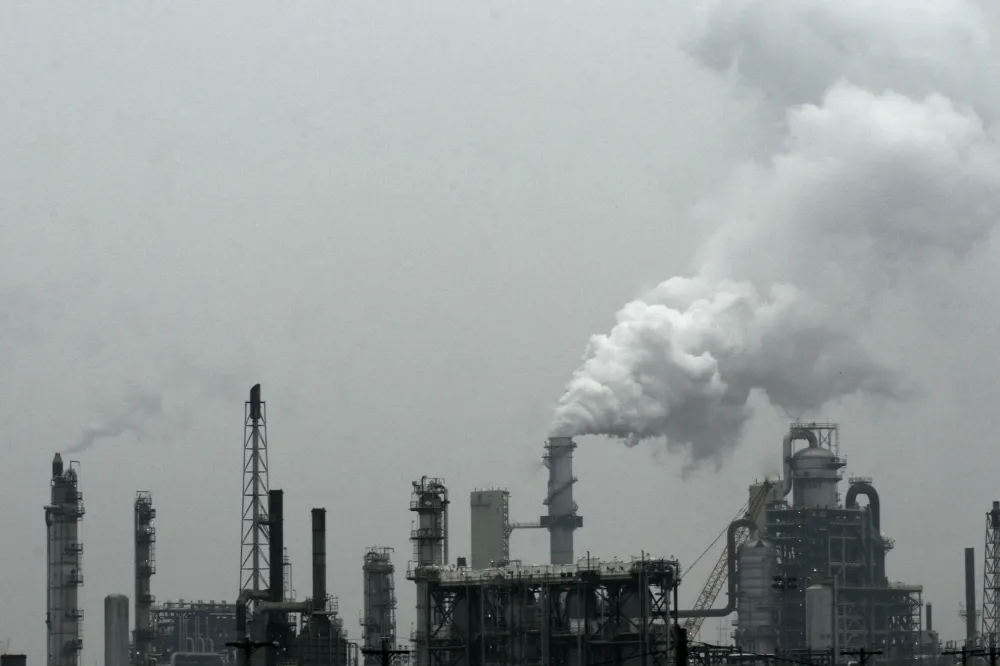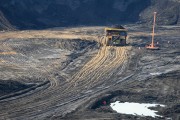The Government of Alberta reported this month that air quality in areas near oilsands development in Northern Alberta was recorded as exceeding warning levels in 2012. While investments in air quality monitoring are beginning to pay off, this data will place a new Premier in a difficult position.
Unless the Alberta Government stiffens its resolve and tightens air emission controls on existing sources — including oilsands projects — continued growth in oilsands production and traffic in the region will degrade air quality beyond the legal limits the regulator put in place to protect human health and the environment.
This threatens not only the people and ecosystems of Northern Alberta, but also creates a risk for all industry in the region. In short, there is a looming legal imperative for the government to act, grounded in world-class data, and it is unclear where the hammer will fall — if at all.
What we expect from the Lower Athabasca Regional Plan
The Pembina Institute supported the development of the Lower Athabasca Regional Plan (LARP) based on the province's commitment that it would take action to proactively manage and resolve cumulative impacts on air quality. The LARP provides the government a toolbox to help manage increases in air pollutants, and it has proven to be a useful policy tool to inform government when air quality is at risk.
Now, however, we need to see the measures provided within the LARP used to manage cumulative effects — before we exceed environmental limits.
Why is action necessary?
The report indicated that there were 18 exceedances of warning “triggers” related to nitrogen dioxide and sulphur dioxide — the two air pollutants tracked under the LARP. These pollutants contribute to acid rain, and exposure to elevated levels can lead to respiratory problems and other human health issues. Of those exceedances, air quality in two areas reached level three in a warning system with four levels. At level three, there is a higher probability of exceeding the hourly maximum limit and the LARP requires appropriate management actions so that conditions do not deteriorate further beyond the fourth trigger, or maximum limit.
"It’s as if we’re driving toward a busy intersection where the traffic light is yellow, but we’re setting the cruise control instead of hitting the brakes. Unless the Government of Alberta acts now to reduce air pollutants in these trouble spots, we’re heading straight for a crash."
According to the Government of Alberta, “all industrial facilities must be designed and operated such that the ambient air quality remains below Ambient Air Quality Objectives.” If these objectives are to be met and legal limits are to be avoided, the government should then treat level three exceedances seriously and respond by taking action to bring pollution levels down.
Instead, the report only says that investigation is ongoing to identify the cause of these exceedances, which occurred two years ago.
It’s as if we’re driving toward a busy intersection where the traffic light is yellow, but we’re setting the cruise control instead of hitting the brakes. Unless the Government of Alberta acts now to reduce air pollutants in these trouble spots, we’re heading straight for a crash.
What now?
The Government of Alberta was criticized for the slow release of these results and the lack of urgency reflected in their response. Environment Minister Robin Campbell, to his credit, did later acknowledge that if these warning signals turn up again in the 2013 data, the province would take action to cut pollution.
 The 2013 report is expected to be released before the end of the year, and we hope to see the government identify a management plan to resolve any ongoing elevated pollution levels.
The 2013 report is expected to be released before the end of the year, and we hope to see the government identify a management plan to resolve any ongoing elevated pollution levels.
This management plan is essential, because the government indicated that the elevated levels were likely due to the combined emissions of two oilsands upgraders in proximity to the stations. Sulphur dioxide emissions from these upgraders have been a known issue for a number of years. In response to this, industry has taken various initiatives to reduce these emissions; however no information was provided as to what their current status is.
With more bitumen production expected, these initiatives are critically important to demonstrate that environmental integrity can be maintained. Our analysis of the Alberta Energy Regulators reports showed that Alberta had approved almost 900,000 barrels per day of additional oilsands production between 2012 and 2014 despite these elevated levels. According to the Oilsands Review Database, there remains another 2.4 million barrels per day in the application queue.
 If Alberta intends to proactively manage the cumulative environmental impacts of a growing industry, the Alberta Energy Regulator must consider these recent air quality findings, as well as forecasted increases in air pollutants, when it makes decisions about future project approvals. Not doing so would represent a significant risk to the environment and human health in the region.
If Alberta intends to proactively manage the cumulative environmental impacts of a growing industry, the Alberta Energy Regulator must consider these recent air quality findings, as well as forecasted increases in air pollutants, when it makes decisions about future project approvals. Not doing so would represent a significant risk to the environment and human health in the region.
The Government of Alberta and the Alberta Energy Regulator must conclude their investigation into these 2012 air quality findings, and immediately start developing an emissions reduction plan for the region to maintain pollution well below dangerous levels. Our air can only handle so much pollution and still be safe to breathe. As approved projects begin operating and increase the amount of pollution in the air, the government’s management plan must put stricter limits on existing facilities to ensure the air remains safe and clean enough for Albertans living and working nearby.










